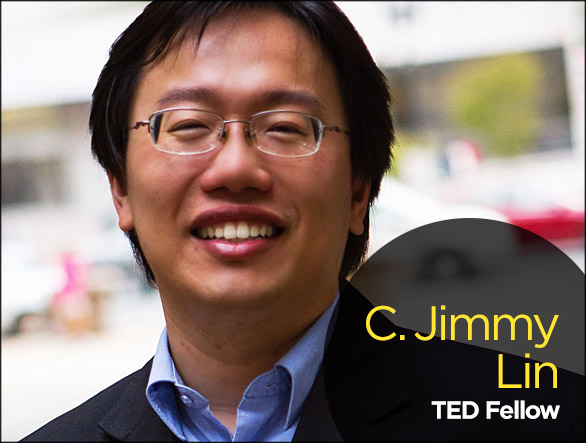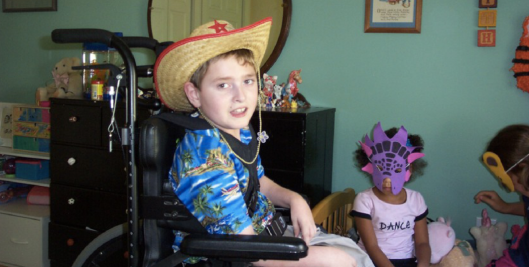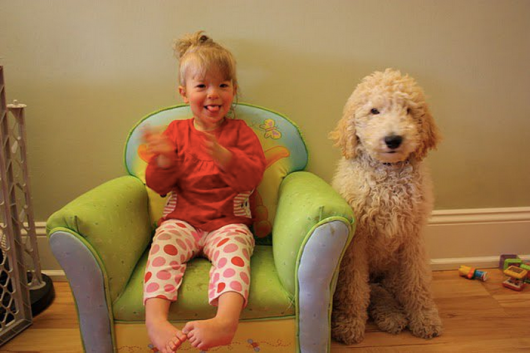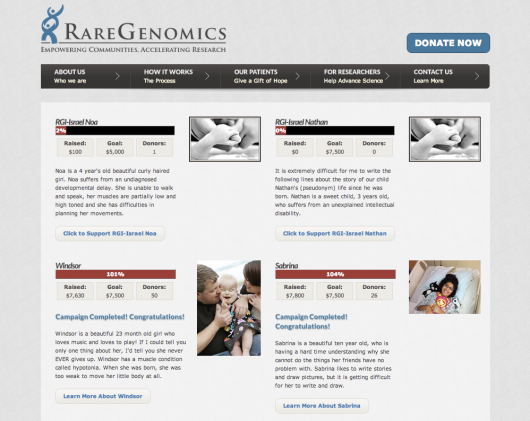
Millions of people, many of them children, suffer from “orphan” diseases — illnesses so rare that no infrastructure exists to investigate or treat them. Now C Jimmy Lin’s Rare Genomics Institute puts hope and empowerment back in patients’ hands by connecting them with researchers, doctors and community support, and a crowdsourced funding platform.
What is the mission of the Rare Genomics Institute?
There are over 7,000 rare diseases, and most of them are not being actively researched. Neither do they have patient organizations helping them. So what happens to most of these patients is that they go from place to place trying to find a diagnosis or seek help. The current medical establishment is not set up to do this because, number one, the medical knowledge is not there because the diseases are so rare; and, number two, there’s no infrastructure to help research these rare diseases.
Is this a cost-related issue?
For many of these diseases, there are challenges from three sides. For academics, there is little funding to study these diseases. From the business perspective, there is too small a market. For awareness, too few are affected to build an advocacy campaign. So most of these patients have had no way of being helped. But one of the really cool advances in biology these days is called personalized medicine. What people are thinking about more and more is creating tailored therapy for different diseases. So even for cancer — even a specific type of cancer — every person is treated individually. This creates a great opportunity to look at rare diseases individually. Rare Genomics helps patients set up individualized research projects to understand their disease, from helping them design science experiments and connecting them to the right researchers, but also raising funds for it, which is also very needed. So RGI offers an online crowd-funding platform. And that’s in a nutshell what we want to do — offer all the resources required to democratize research for rare diseases.

RGI helped diagnose Robert with dystonia 16. He is the 9th case in the reported literature. Photo by Jeneva Stone.
How did you come to straddle the worlds of medical research and philanthropy?
There have always been two strands of my life. One is I’ve been really passionate about science and innovation. The people I admired growing up were people like Thomas Edison, Albert Einstein, people who had been able to transform what we know about science. That intrigue of science has always been a driving factor with me. Secondly, there’s more of a compassionate philanthropic side that I see where I could make an impact — not only for science, but to help people suffer less, to offer more cures and make the world a better place. So biomedical research has been a very natural place where these strands come together.
During my medical and graduate training, I saw a great need within the rare disease community, where there is no medical research — nor medical help — for these patients. So, during my graduate training in cancer, I slowly transitioned and worked, starting with genomics, in the hopes of being able to bring science and innovation and discoveries to a community that really needs it.
Did you become a computational geneticist specifically to study rare diseases?
No, I did that training mostly within cancer. Computational analysis shares two of my other loves: big data and computers (I’ve been programming since I was in elementary school) and biology. Computation analysis was a marriage of those two. That’s a very common theme of a lot of my life — I sort of live between boundaries of fields, seeing how different fields interface, and potentially provide a conversation that would result in new ways of thinking about them.
What does a computational geneticist do, and how does that work dovetail with rare disease research?
Within the last decade or two in the generation of biologic information, it has been easier and easier to create larger and larger datasets. Biologists traditionally have not been the people to deal with large datasets. So there has been an influx of computer scientists, mathematicians and statisticians entering this field. But it’s crucial to understand not only the math and the computer science to crack the data, but the biology behind it. There’s now a great need for people with a background in both biology and big data, to make sense of it. I’m now trying to take that knowledge into rare diseases.
RGI’s model is completely new. Do you think it will be difficult to gain acceptance?
A couple decades ago, the idea that anybody could publish was kind of crazy. And now we do it with blogging. Or the idea that anyone could open a store. Now we have eBay. Right now, it’s still a crazy idea for an individual to design and fund a research project, but we’re trying to make it easy for anybody to do that.
Combining crowdfunding with research, and letting patients do research — all this is very foreign to all the different fields we touch. Researchers are not used to doing this. Patients never think that they can do research on their own. Crowdfunding has not been done much on an individualized research basis. Crowdfunding is more on an organizational basis. A cancer foundation wants to raise funds, and everybody gives a little. But doing so on an individual level, as almost a non-profit of one, is a new model in itself, as is making the patient the driver of research.

RGI helped discover a new gene that is causing Maya’s extreme developmental delay Photo: Dana Nieder
How do researchers respond to the idea of patients asking questions and trying to take leadership in the research process?
It varies. Some totally embrace what we do and are great partners, and some think what we’re doing is very dangerous — that patients should leave the work to the professionals. But when patients are interested in the research and want to be part of the process, we try to help facilitate that, and pick researchers who are open to that. We view and encourage the relationship between researchers, doctors and patients as a partnership and see this as a collaborative process. So yeah, we definitely try to make that process beneficial and to find good matches there.
But I think this is the beginning of a paradigm shift. Even at TEDGlobal, John Wilbanks talking about more open data, and patients owning their own data. Slowly, patients are now owning their data, participating in their research and having more control. (There are even more extreme cases, where the patients are doing research themselves in their garages!) The research area we’re working in is pretty new in itself as well. Bringing together these new things with a twist makes us weird in what we do. But this unique combination allows for helping these patients who otherwise cannot be helped. So we’re proud that we’re weird!
How many people end up working together on a patient’s team?
On the family side, it’s usually just the nuclear family. But when they do their fundraising, their entire community gathers around them — hundreds of people who give small amounts. On the research side, it can be anything from two to ten – fewer than a dozen researchers participating in this to help this particular family or child to be able to do that. So that’s on the research side. So on the RGI side to work out all the logistics, we have probably around ten people, from scientists to the people who are setting up the webpages and the business side, and all the things that lubricate the whole process. It becomes actually a pretty large number of people. Everybody contributes that little bit to be able to enable such a big project.
In some circumstances, we help rare disease patients find each other for support. So for example, when we have helped a family and actually discovered they had a variation of a known disease, we help them to reach out to that existing community, if there is an existing community. For some of our patients, there’s no precedent. One of our earliest patients, Maya, was the first to have her heart disease, basically. There’s no other. Another patient, Robert, is the ninth patient in recorded history to have his disease, a type of dystonia called dystonia 16. Dystonia is a neuromuscular weakness.
On a practical level, how are patients being helped?
Fo Maya, we were able to find a new gene. She has a developmental delay – she’s unable to communicate, behind with her milestones. All the traditional tests had come up negative. For Robert, we’re training for him to communicate using devices where he uses his eyes and other methods. He’s starting to communicate with his family, which is amazing. We had one diagnosis right before Christmas: a little girl also with a whole smattering of vague diagnoses in terms of developmental delay and medical problems was just diagnosed with a disease called dravet. We’re starting to see the fruits of the projects that we started about two years ago, and it’s really exciting.
Why the focus on children?
Most rare disease patients, 80 percent, are children, mostly because many patients with rare disease don’t survive to become adults. Another reason is that, with children, it’s more likely that they have a genetic disease versus those environmental or dietary causes. Because the technologies we’re working with mostly look at genetic diseases, they become better candidates. That being said, we also do work with adults.
RGI also tries to help, on a macro scale, create resources for researching rare diseases in general. During TED2012, we gave away genome sequencing to the rare disease community. More recently, we were able to give away another $400,000 worth of research to the rare disease community to any types of interesting projects. In total, I think we’re close to three-quarters of a million dollars’ worth of giving away research on a macro scale. And I’m excited that we’re able to contribute both on the macro level as well as on an individual level.
Where are the donations coming from?
The first was from Washington University in St. Louis, as well as from some companies, like Agilent. Our latest one was a combination of more than 20 different companies, all giving services and reagents and funds for rare diseases, which we distribute. We’re in the process right now of deciding who we’re going to award them to. We’ll be announcing the winners on Rare Disease Day this year, right around TED again.
When TED Fellow Salvatore Ionesco was diagnosed with brain cancer and put out a call for open source cures from all disciplines, you responded. How will you work with him?
As I mentioned before, my background is working in cancer, and Salvatore’s cancer, glioblastoma, was actually my specialty. We were the first to do whole exome sequencing for glioblastoma and to be able to find important genes there. So when I saw Salvatore’s call, I reached out. I definitely think we can help. We’re in discussions about getting tissue samples and doing sequencing for him, and we’ll publish it in an open-source format for the wider community. It’s very exciting. Hopefully we’ll be able to find things in his genes for which we can intervene medically.
Recently the RGI received a $25,000 Drug Information Association 2012-2013 philanthropy grant to produce multimedia materials on rare diseases and the RGI’s work. Why did you apply?
One of the main ways of getting the research democratisation movement started is education and understanding. We also want to inspire hope for patients with rare diseases, who often feel lonely and hopeless, and think nobody’s out there to help them. With the grant, we hope to produce multimedia projects including podcasts, video, feature articles and photography to be able to tell these inspiring stories of families who have been able to push forth research and do amazing things for their kids – from finding cures to discovering diseases. The hope is that when people are first diagnosed, they’ll look to these examples for inspiration and hope. We’re talking to some TED Fellows to see who might want to contribute to this product. Teru Kuwayama and Kitra Cahana seems to be excited about the photography, David Gurman might help with some of our Web resources, and Lope Gutíerrez-Ruiz and Nassim Assefi might help us put together photography and text. I think it’s going to be a really fun project.
And how has the TED Fellowship experience been for you?
It has transformed a lot of things. I think all the TED Fellows feel a little out of place in the world because the things they’re doing are a little bit different from the norm. To have that support confirming, “You know what, even though your idea’s a little crazy, we think that it actually may work,” has been a boost, not only for ourselves and our own confidence, but also for people partnering with us. I sometimes see it as X-Men, Xavier’s academy, where they bring together all these different people who feel out of place but have special abilities and are honing these abilities for the forces of good. It’s been great in terms of friendships made within the fellowship program, and the support from TED Fellows team has been amazing as well – whether helping us with promoting our crazy ideas or supporting us in all the different challenges we face in the day to day.
Which X-Men character are you, then?
Probably Beast – he’s a science nerd and is blue, like me.

Comments (15)
Pingback: Infographic: It’s Rare Disease Day
Pingback: Values & Capitalism » Crowdfunding Genetic Therapy: A Healthcare Revolution » Values & Capitalism
Pingback: The Rare Genomics Institute celebrates World Rare Disease Day 2014 | Jusd
Pingback: The Rare Genomics Institute celebrates World Rare Disease Day 2014 | TEDFellows Blog
Pingback: The Rare Genomics Institute celebrates World Rare Disease Day 2014 | jr
Pingback: worlds rare disease day | wisdom of world
Pingback: The Rare Genomics Institute celebrates World Rare Disease Day 2014 | BizBox B2B Social Site
Pingback: The Rare Genomics Institute celebrates World Rare Disease Day 2014 | Best Science News
Pingback: The Blow Magazine | The Rare Genomics Institute celebrates World Rare Disease Day 2014
Pingback: Infographic: It’s Rare Disease Day | Content Curated By Darin R. McClure & a few photos
Pingback: Nuevas tecnologías investigaciones de enfermedades raras | Think Big
Pingback: Wizmo Blog » Blog Archive » Rare gifts: Fellows Friday with C Jimmy Lin